Six years ago, to commemorate World Book Day, I published a post about characters in Hindi cinema shown with books (not necessarily reading books, but sometimes even just holding a book). My main criterion there was that the book should be identifiable, and (preferably) a real book, not just a fictitious prop bunged into the film. The idea was to celebrate books, even in cinema. After all, the connection between books and cinema goes far beyond the fact that books are often adapted to the screen. Both the page and the screen are media used to tell a story; both can entertain, both can provoke thought, both can be incendiary. And just as characters in books may watch films, characters in films may read books. To underline their own personalities and interests, by way of making an oblique reference to a thematic element of the film itself, or simply to have something to do.
This year around, with World Book Day coming up again (today in the UK, for much of the rest of the world on April 23), I decided it was high time to do another iteration of that ‘characters with books’ idea. This time, it’s characters in English-language cinema: mostly either Hollywood or British cinema. As for my earlier post, the criterion here is that the book should be identifiable: its title should be readable. Also, preferably, it should be a real book, not a fictitious one. And, of course, as for all my posts on this blog, these are all from pre-70s films that I’ve watched.
1. Rhoda reads Elsie Dinsmore in The Bad Seed (1956): Or at least has been reading, is going to read once she’s finished showing it off. The Bad Seed actually had quite a bit of reading in it: there’s even a scene where Rhoda’s mother Christine (Nancy Kelly) does some bedtime reading to Rhoda (Patty McCormack), but that particular book was almost certainly a fictitious prop, no more. Martha Finley’s Elsie Dinsmore, however, is very real. In fact, it went on to be followed by several other books about the same character, Elsie Dinsmore, following Elsie through her childhood, adolescence, and adulthood, even till Elsie has children of her own.
2. Rosie reads Forever Amber in Spring in Park Lane (1948): Lana Morris’s chatty housemaid, Rosie, is hardly the type of person you’d expect to be bookish: she has a tendency to be flirtatious and flighty, not at all the stereotypical bookworm. But then (as in the case of Rhoda in The Bad Seed, above), perhaps that is the main point: to show that books may be read by anyone, anywhere, and it’s not always necessary that the book reflects the character or personality of the person reading it. I read Kathleen Winsor’s Forever Amber ages ago, so have few memories of it, besides a very vivid description of what it might have been like to live through the Black Death in 17th century England.
3. Montag reads David Copperfield in Fahrenheit 451 (1966): The screen adaptation of Ray Bradbury’s classic science fiction novel about a dystopian future, where books are taboo and are burnt when anybody’s caught with them, is in itself a film about books. About the power of books, the ability of books to open our minds and make us think: all that a dictatorial government may not consider desirable. Montag (Oskar Werner) isn’t just a citizen in this world; his very livelihood depends upon him destroying books: donning flame-retardant clothing, ransacking homes for books, and then making great big bonfires out of all that paper.
After he encounters a very odd young woman (who asks Montag if he’s ever read any of the books he’s confiscated), Montag, disturbed and unsettled by a series of events, actually does sit down to do so: and the book he opens and begins to laboriously muddle his way through, is Charles Dickens’s classic David Copperfield.
4. Melanie reads (aloud) from David Copperfield in Gone with the Wind (1939): I couldn’t resist this: another film, but the same book. Melanie (Olivia de Havilland), along with Scarlett (Vivien Leigh) and the other women of their small sewing circle sit around a table at night, ostensibly employed in their stitching, but all on tenterhooks as they wait for their husbands to return from what might be an endeavour fraught with danger. The tension mounts, nobody is really being able to concentrate on their sewing, and Melanie finally decides that it might be better if she read aloud to them all. The book she chooses—the book already on the table, the book at hand—is David Copperfield. Interestingly, in the original novel by Margaret Mitchell, Melanie reads from Victor Hugo’s Les Miserables, not David Copperfield.
5. Lieutenant Hirth discusses Mein Kampf in 49th Parallel (1941): And, every now and then, there’s a controversial book, even a book that’s banned in many countries. 49th Parallel was the story of a U-boat crew which finds itself stranded in Canada and must make its way to the US (which is separated from Canada by the 49th parallel, therefore the title) —the US at the time being neutral. The commander of this small group is a hard-headed Nazi named Lieutenant Hirth (Eric Portman), a man so dedicated to the Third Reich that he even carries around a copy of Adolf Hitler’s Mein Kampf with him. When he and his men take hostage a couple of trappers (played by Finlay Curry and Laurence Olivier), Hirth cannot resist the temptation to indulge in some evangelism. Literally: when he shows it to Johnnie (Olivier) and asks if Johnnie has read it, Johnnie replies: “I’ve no room in my pack for any book. I know my Bible, that’s enough for me.’ And Hirth says, “This is the Bible.”
A chilling reminder of just how fanatical Nazis could be.
6. Sergeant West reads British Birds in Sleeping Car to Trieste (1948): From a grim scenario to a light-hearted one. On the Orient Express, an American sergeant ends up sharing a compartment with an enthusiastic British ornithologist. Within a couple of minutes of being introduced, the ornithologist (who is on a lecture tour through Europe) presses on his reluctant fellow passenger a book he might enjoy. West doesn’t, not one bit, and hands the book back almost immediately.
This is one of those books that’s not immediately identifiable (that cover image, of a snipe, is not something I’ve been able to find online), and the name of the author isn’t visible. But, given the title of the book, the fact that the book should have been available in the late 1940s, and—though this could be coincidence—the appearance of snipe on the cover, it may be this book, by Wilfred Willett. There’s no certainty, though, since ‘British Birds’ is by no means a unique title.
7. Brigitta reads John Dale in The Sound of Music (1965): The Sound of Music is a film I have watched so many times, I actually remember several of the dialogues and pretty much most of the scenes. This scene, near the beginning of the film, when Captain von Trapp introduces his children, is one of the most memorable ones, since it helps introduce us to the children: not just their names and faces, but who they are, what they’re like. Brigitta, solemn and studious, comes into the room in answer to her father’s summons, with her nose in a book. Obviously a bookworm, though from this description of Ejnar Mikkelsen’s John Dale, it may not actually be a book for a child or to establish someone as being a discerning reader. On the other hand, maybe (like I was as a child), Brigitta is one of those who will read just anything she can lay her hands on.
8. Clarence reads The Adventures of Tom Sawyer in It’s a Wonderful Life (1946): Not all readers in cinema are humans. Some are once-humans, like Clarence, the angel on probation. Clarence hasn’t yet earned his wings, and is endeavouring to do so by looking out for the suicidal, severely depressed George Bailey… while dipping into what is obviously his favourite book, Mark Twain’s classic The Adventures of Tom Sawyer (literally dipping: the book takes a dunking, along with him, when Clarence flings himself into the water to save George from drowning. Clarence ends up having to shake the book dry). An angel might be expected to perhaps read something more erudite or religious (the Bible, perhaps?) but as this discussion explains, maybe there is a good reason for this choice—perhaps Clarence finds inspiration in the story of Tom and Huck.
9. Rachel Cooper reads the Holy Bible in The Night of the Hunter (1955): … and here someone does read the Bible. Or not, because in the particular scene where Ms Cooper (Lillian Gish) is shown with the Bible in her hand, she doesn’t actually read from it; she talks about an episode from the book, using it to illustrate a point to the scared child she knows is eavesdropping. Interestingly, the main character in the film, Robert Mitchum’s criminal Harry Powell, also has the Bible on hand—and is constantly using it in the proverbial ‘devil citing scripture’ way: he pretends to be a preacher, his knuckles tattooed with LOVE and HATE, his speech all fire and brimstone. It’s a brilliantly told example of contrasts, between Rachel Cooper’s understated but true Christian feeling on the one hand and Powell’s completely hypocritical bombast on the other.
10. Maxwell reads Crime and Punishment in Island in the Sun (1957): And, to end this list, a classic of not just Russian, but world literature, as also a book that has a bearing on the plot of the film. Maxwell (James Mason), maddened by jealousy (he suspects his wife is having an affair with a family friend), strangles the man and then tries to make the whole sordid thing appear like a robbery gone wrong. Crime and Punishment, Fyodor Dostoevsky’s novel about the aftermath of a crime—the confusion, the guilt, the paranoia which grips the culprit—is mirrored in what Maxwell goes through, and this is not just subtly indicated by the presence of the book; it’s referred to, as well.
Have you spotted any other books in the films you’ve seen? Any favourites? Please share.
And yes, happy World Book Day! Which book are you reading right now?




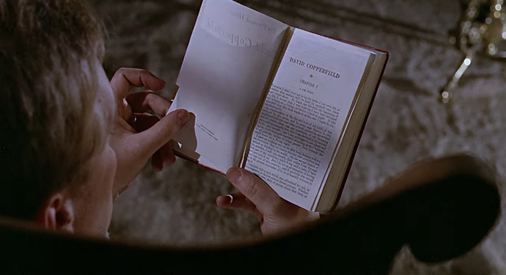
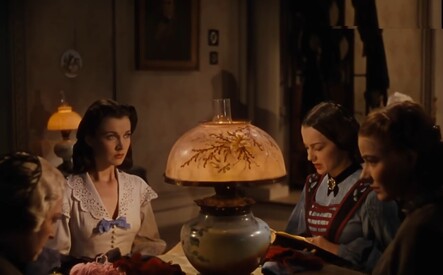
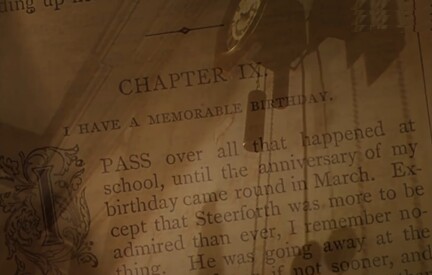
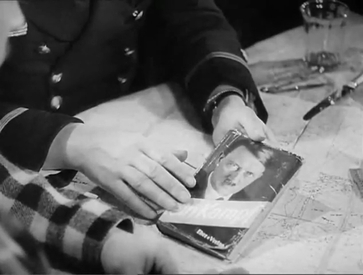
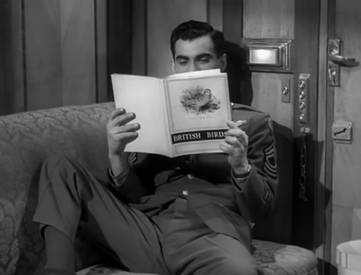



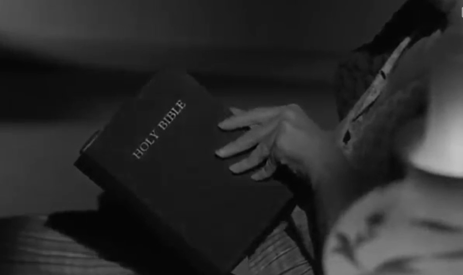
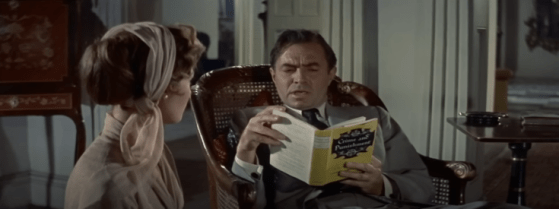
Hi Madhuji, This was an unusual post. Enjoyed it thoroughly. Hope, we can have another one from Hindi movies.
LikeLiked by 1 person
Thank you, and I’m glad you enjoyed this list. I am working on a second Hindi film list, let’s see when I can get that finished.
LikeLike
Really liked this unique bookish post!
And it’s so interesting to spot the books that the characters are reading, especially if you know the author/title. Sadly, I haven’t watched any of these. Now, I’m going to read the Hindi movie post.
LikeLiked by 1 person
Thank you! I’m glad you enjoyed this one. There are actually several movies here which I like a lot – Gone with the Wind, It’s a Wonderful Life, and Fahrenheit 451 are the ones I’d especially recommend – all of them are classics.
LikeLike
Currently reading “Into the Woods” by Tara French.
Did you watch “The Reader” starring Kate Winslet? Books dominated quite a lot in the movie.
LikeLiked by 1 person
How is Into the Woods? I haven’t read it, but a cursory search showed me that it’s a mystery novel. Always something I’m eager to read (I have just finished Christie’s Evil Under the Sun, by the way).
I don’t think I’ve watched The Reader. I should give it a try. Books and Kate Winslet sounds like a good combination.
LikeLike
Do watch The Reader when you get a chance. I think you’ll like it.
I was still reading Into the Woods when you replied; so I didn’t reply until I finished it. It’s a police procedural and quite well written. The denouement is both brilliant and underwhelming, if that’s possible. I don’t want to give too many details away in case you read the book but it’s certainly worth reading. There are two kinds of mystery books – the whodunits (Christie, Ellery Queen, Rex Stout) and the psychological mysteries (PD James, Dorothy Parker). I have a weakness for the former and this book definitely belongs to the latter. The one thing that really annoyed me was that the narrator of the book (one of the detectives) has a lot of psychological baggage and he vents out from time to time. This slows down the narrative and does not add anything to the plot or solution.
LikeLiked by 1 person
Thank you for the recommendation for Into the Woods. I far prefer whodunnits to psychological mysteries, so this is definitely something I would like to read. Am putting it on my wishlist right now!
LikeLike
Madhu Ji,
I absolutely love the concept of showcasing real books in films, adding an authentic touch to the storytelling.
By the way, I have revisited your old post of Hindi films on the same subject (2018) and enjoyed it thoroughly.
Your insights into the connection between books and cinema are truly enlightening!
Gandhi Vadlapatla
LikeLiked by 1 person
I am so glad you enjoyed this post and the Hindi cinema one too! Thank you for reading, you’re so encouraging.
LikeLiked by 1 person
Lovely companion post to the earlier one, Madhu. I have to see the films in your list that I haven’t yet. More films to watch! WDIGTT?
LikeLiked by 1 person
I’m glad you enjoyed this, Anu! Thank you. And yes, some of the films on this list are really worth watching. :-) Skip 49th Parallel, though – it’s a little too grim, and (not nice for me) Laurence Olivier has a tiny role.
LikeLike
Seeing the articles’ title, perhaps because you recently covered ‘The Bad Seed’, before I even began reading I thought of Rhoda and ‘Elsie Dinsmore’. I think its’ use in the film is satirical, as in contrast to Rhoda, Elsie is a highly religious saint-like girl who always does the right and moral thing. Read today the books are pretty awful, very dull stretches alternate with absurdly dramatic ones, but they were very popular for decades. There are even modern re-writes. A critic once called Elsie “a prig, with glamour..”
LikeLiked by 1 person
Thank you for explaining that. I’ve not read any of the Elsie Dinsmore books, so didn’t realize the point that was being made. Your comment made me think that not only is Elsie quite a contrast to Rhoda, she’s also perhaps rather like what Rhoda pretends to be at times – all dressed in frocks, so sweet and good that she had almost everybody fooled.
LikeLike
Not quite reading a book, but yes referring to them all the time (and maybe a bit of reading shown too, I cant remember honestly) are two all time favourites… You Got Mail and Notting Hill. Delightful movies both and makes one want to run to the nearest bookshop :)
LikeLiked by 1 person
Oh , and I found this on Wikipedia , as I did remember that a travel book was discussed in the movie (Notting Hill) , so here goes as quoted :
The film features the book Istanbul: The Imperial City (1996) by John Freely. William recommends this book to Anna, commenting that (unlike another book in the store) the author has at least been to Istanbul. Indeed, Freely taught at Boğaziçi University in Istanbul[18] and was the author of nine books about the city.
In the film’s last scene, Will is shown reading the 1994 book Captain Corelli’s Mandolin by Louis de Bernières.
LikeLiked by 1 person
I remember watching You’ve Got Mail, years ago (and enjoying it), though I didn’t remember the books. And Notting Hill, believe it or not, I have actually never got around to watching. :-( I should. And I need to visit Turkey someday!
LikeLiked by 1 person
You HAVE to watch Notting Hill, for a delightful dose of British wit and absolutely heartwarming bunch of supporting characters. And the characters of Julia Roberts and Hugh Grant are not bad either :)
LikeLiked by 1 person
I like Hugh Grant, but not Julia Roberts. She, in fact, is the main reason I have not got around to watching it yet. But yes, I must. It’s high time I did. :-)
LikeLiked by 1 person
Madhuji,
This is quite an off-beat and stimulating post. Enjoyed it.
I was not aware of your similar post on Hindi movies. Will read it soon.
I could remember couple of movies from recent times related to this post.
One is Serendipity (2001) in which we can see the book – Love in the time of Cholera by Gabriel Garcia Marquez. Kate Beckinsale, the heroine writes her name and number in the book and sells it off and wants the hero to find it., which he does eventually.
Another is The Hours (2002) where Nicole Kidman plays Virginia Woolf, the writer. In a different time zone in the movie, the character played by Julianne Moore keeps reading Mrs. Dalloway, written by Virginia Woolf.
LikeLiked by 1 person
Thank you – both for the appreciation, and for the two examples you offered. I don’t think I’ve seen either of these two films, but the second example reminded me of one example from a ‘new’ film: Julie and Julia, in which the Julie character sets herself a project to cook from Julia Child’s Mastering the Art of French Cooking. The book, of course, is in evidence throughout the film.
LikeLike